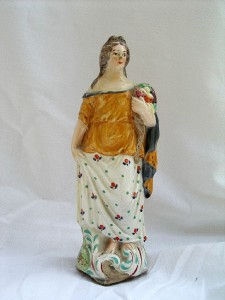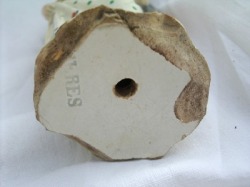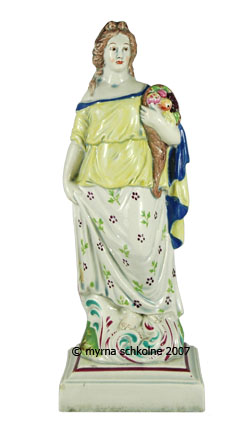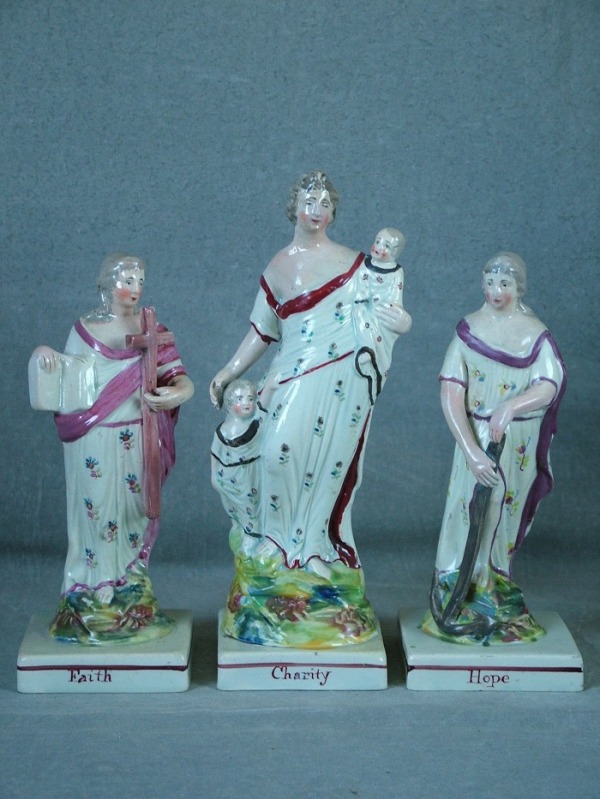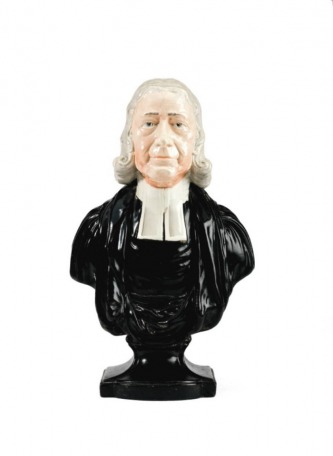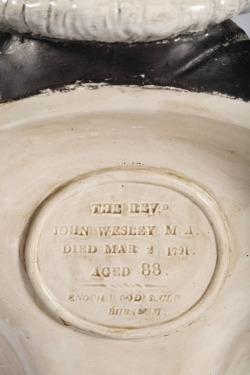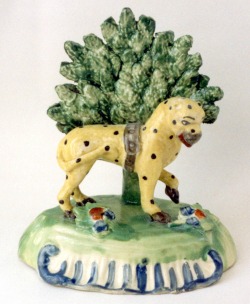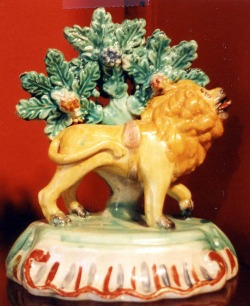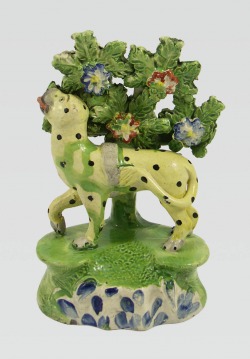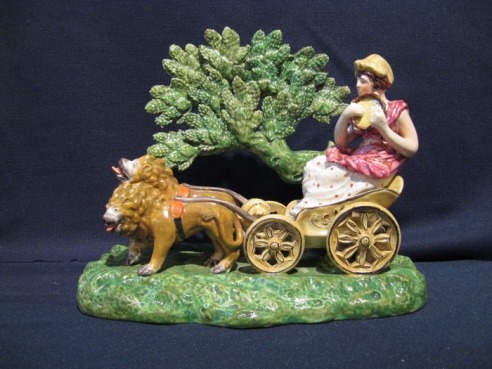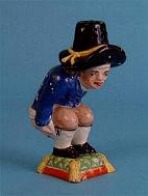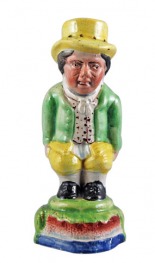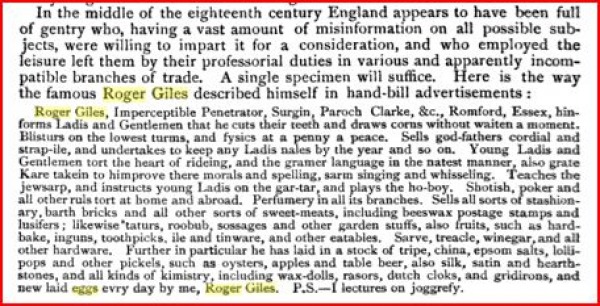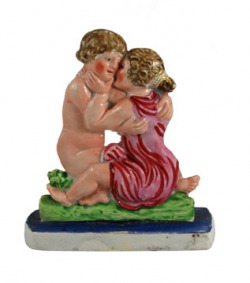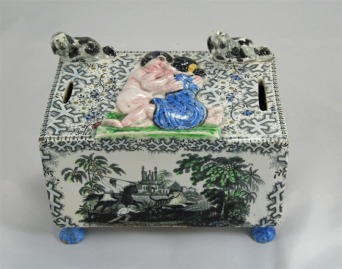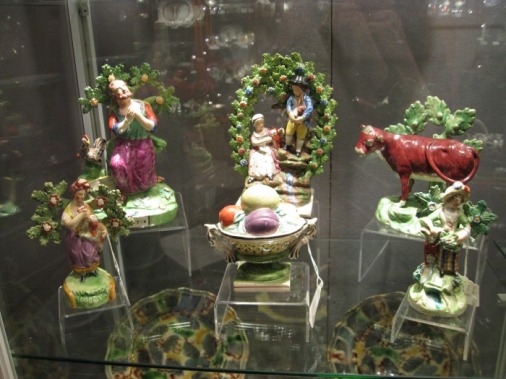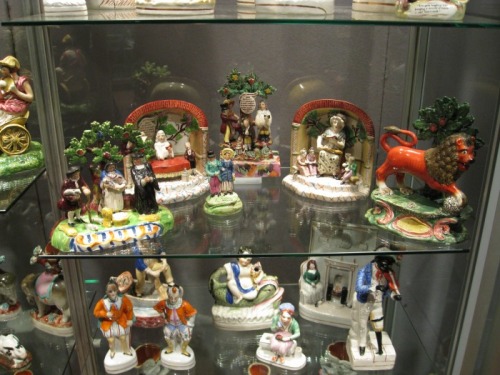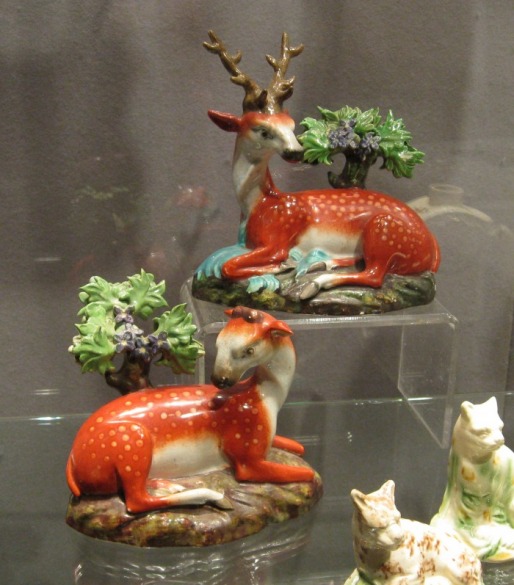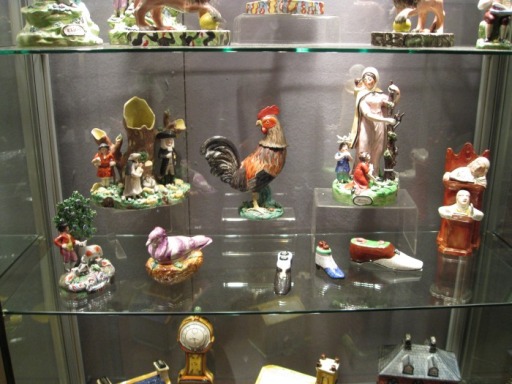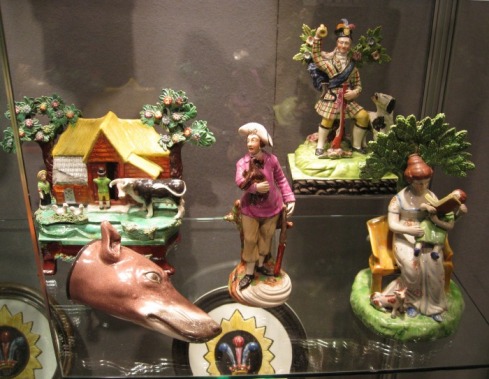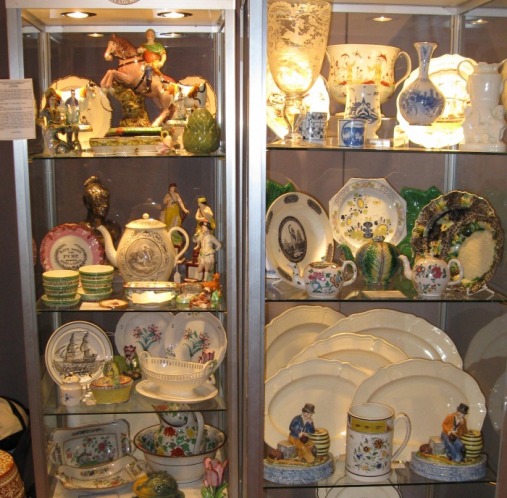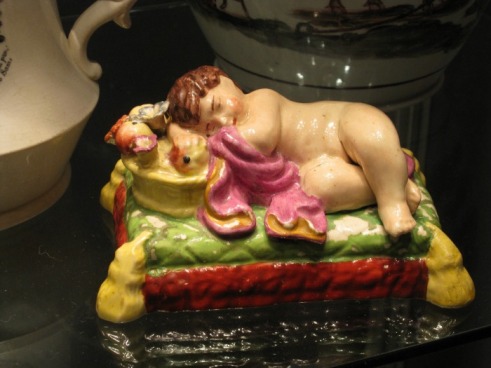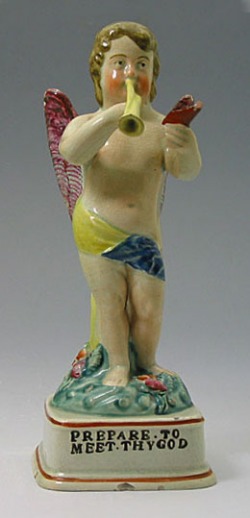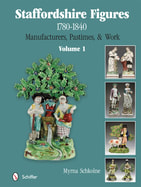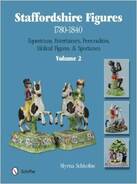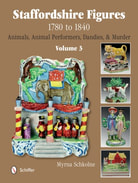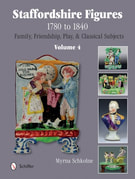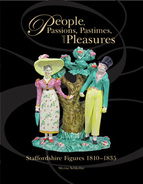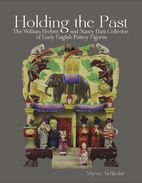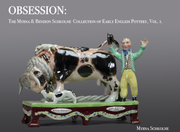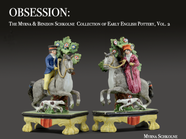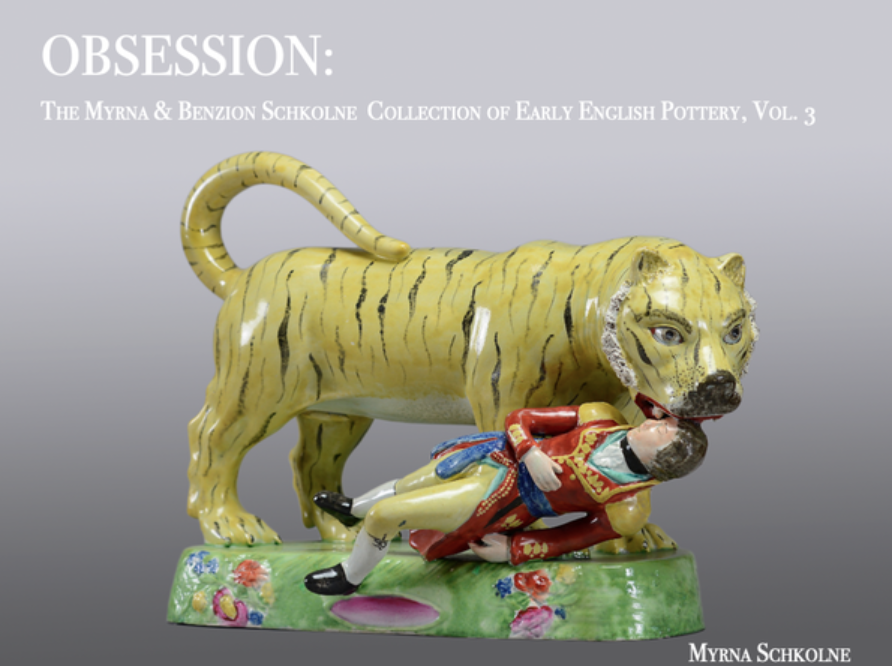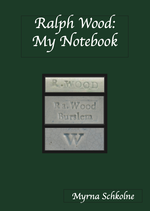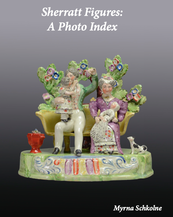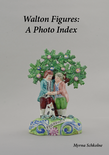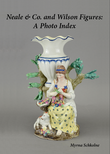I notice this little pearlware figure for sale in cyberspace. The seller advertises it as at fault, noting that there is restoration to the neck and chips on the base. I am certain this seller tried to disclose all damage to the best of his/her knowledge, but can you notice an even bigger flaw in this figure?
When I look at a figure, I turn it upside down almost immediately it reaches my hand. Often I think the owner imagines I am looking for a price sticker, but not so. The base reveals so much, and in this case it reveals everything.
Once upon a time, this figure was mounted on another piece of earthenware. It has broken away from the original base. That's why the edge of the remaining base is unglazed. The figure should look like the one below.
Because so many Staffordshire figures are mounted on bases, you will on other occasions see figures that have lost the original base. The wrinkle is that sometimes potters made figures with a base; and sometimes they made the same figure without the additional base. So how do you know the difference? The way to tell if the base is correct is to look at the edges of the base. If the edge is glazed, all is well. If the edge is unglazed, it is so because the base has broken away. (Beware a dealer who has had the raw edge painted over to conceal the damage. Collecting can be a mine field!)
What of the mark CERES below the figure? Well, it is her name, of course. This little lady represents Ceres, the goddess of agriculture.
This particular version of Ceres was first made by James Neale & Co--a potbank based in Hanley, owned by James Neale and sundry other partners, and managed by Robert Wilson. It operated thus from around 1781 to 1792. Figures made in that period can occur with the additional mark NEALE & CO.
From 1792, Robert Wilson potted on his own, and he was joined in 1798 by David Wilson. Robert died in 1801, but David continued to run the potbank with his son. The business continued thus until 1820, by which time the son had run it into the ground. Our figure of Ceres continued to be made, but in the Wilson period, the factory mark was the letter G with a crown above.
So if there is a factory mark, we know roughly when CERES was made. But very often there is no makers' mark. Just the word CERES. So was such a figure made on Neale's watch, on Robert Wilson's watch, on David Wilson's watch, or by some other potter entirely? I do believe that we can rule out the last option. The figures are all so similar in many ways that it is difficult to explain an origin other than Neale-Wilson.
The moral of the story, I guess, is to be aware that CERES (and other similar Neale-type figures) are NOT all Neale, dating from 1785, as most sellers would have you believe. That claim is baseless. A figure without a factory mark may well have been made by Wilson as late as 1820. But if the figure is lovely, it doesn't matter a jot. Just please be sure it is all there!
